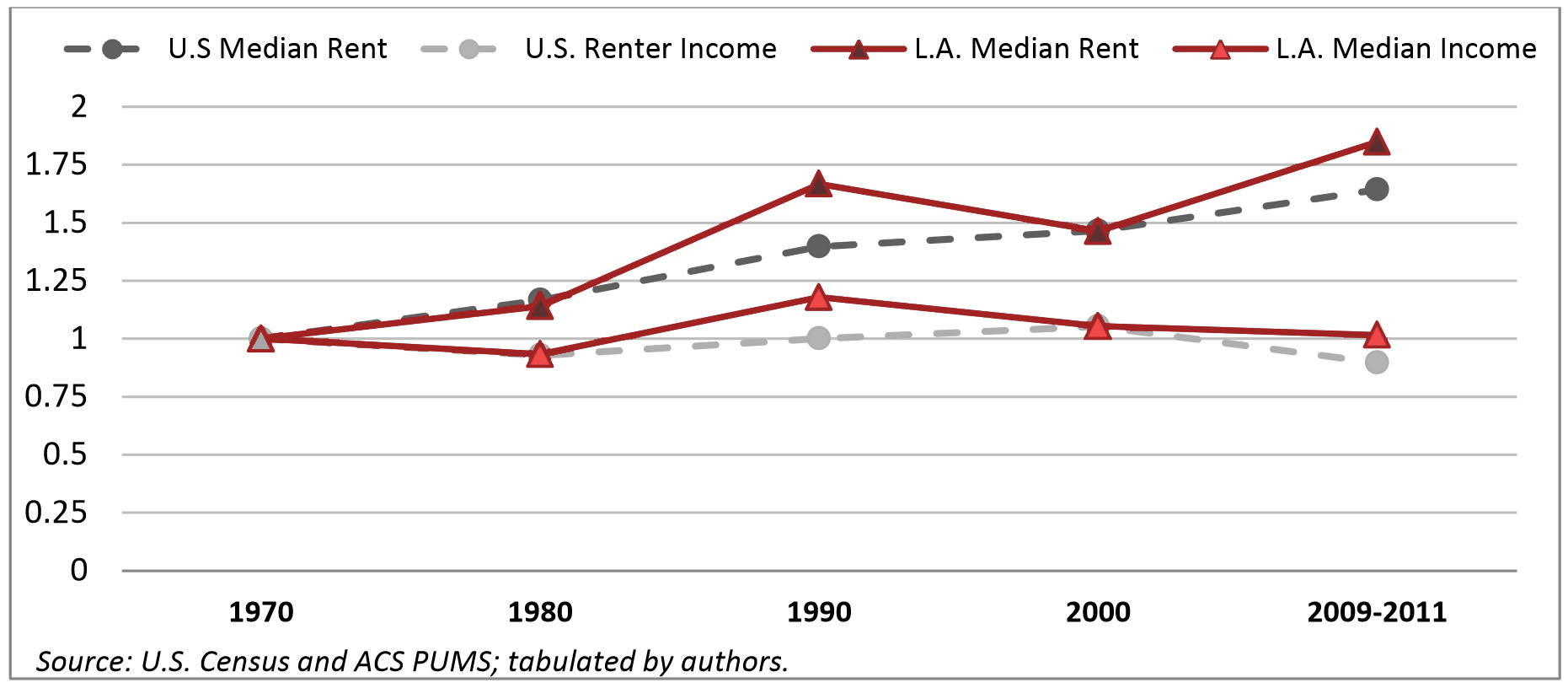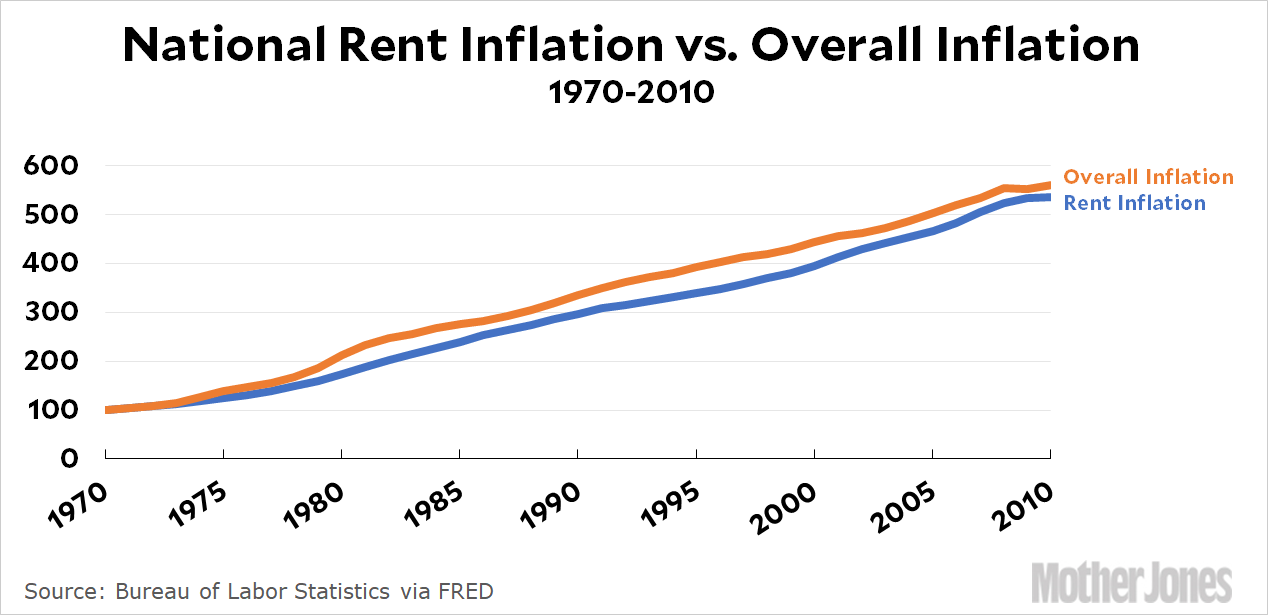How much has rent gone up over the past few decades? Yesterday I put up several posts showing national averages, and while that’s useful to see it doesn’t tell us much about the urban areas that have obviously seen the biggest increases. The problem is that data specific to urban areas is hard to come by. In this post, I want to give you a sense of just how hard it is to find reliable figures on this.
Exhibit A is a report out of UCLA from a few years ago. It’s typical of the reports you see on this subject, and it’s billed as showing that rent burdens have increased substantially in Los Angeles since 1970 (all figures are adjusted for inflation):

If you do a little arithmetic, this chart shows that, relative to income, rents in LA increased about 80 percent between 1970 and 2010 (red lines). However, it also shows that rents nationally increased about 80 percent too (black lines).
There are several things that should make you suspicious here. First, rents have gone up 80 percent? That’s not a crisis, that’s a catastrophe. Second, rents in LA have increased at the same rate as rents nationally? That doesn’t seem likely. Third, rents in LA increased 50 percent from 1980 to 1990? Yikes! Fourth, median incomes have decreased since 1970? That hardly seems right. In fact, all of these things seem questionable, but it’s difficult to know for sure. Take incomes, for example. Here are several different measures of how much real income grew between 1970 and 2010:

These are all straight from the standard Census Bureau series, and they range from 7 percent growth to 25 percent growth. So which is the best measure? Households or families? Median or the 40th percentile, which is (maybe) more representative of renters? There’s no way to say for sure, but my best guess is that real incomes went up about 15-20 percent between 1970 and 2010.
So why do the UCLA folks show national income decreasing by about 10 percent? And if they’re that far wrong about national income, do we trust their estimates of income for Los Angeles? And anyway, is that an estimate for Los Angeles, or for the Los Angeles SMSA, which includes Riverside and Orange County?
For that matter, do we trust their numbers on rent? They say that rent went up nationally by about 65 percent between 1970 and 2010. But here’s a chart of national rent inflation:

The BLS says that, nationally, rent has increased less than overall inflation. If the authors of this report are off by 70 percent on national rent, are they also off by 70 percent on rent in LA? But wait. Should we compare rent inflation to the CPI (as I’ve done) or to the PCE inflation index? Or, given the stickiness of rents, should we only measure new rents, not rents from people who have been in the same place for years? And maybe we should measure only true rents, not “imputed” rents from homeowners. But then we end up with messy composition effects.
In other words, I’m not even saying the authors are wrong. There are so many ways to measure this stuff that it’s impossible to say there’s a “right” way. That said, they claim in several places that, relative to income, rents in Los Angeles have grown about as much as they have nationally—and there are some pretty standard inflation figures that suggest rents nationally have been stable for a long time. So if it’s true that LA isn’t an outlier, then rents in LA have been stable too.
I’m not saying I believe that. I might believe it, but it’s just too hard to know which figures are the most representative of real life. Caveat emptor.
POSTSCRIPT: It’s worth adding that nothing here implies that housing prices in LA (or elsewhere) are fine. I’m actually sort of agnostic about that. But it’s worth knowing whether housing prices are high but have always been high or higher than they’ve ever been before. One is bad, but the other is potentially a crisis.














